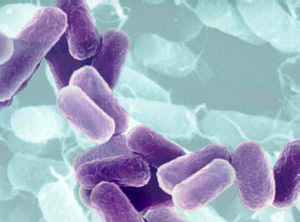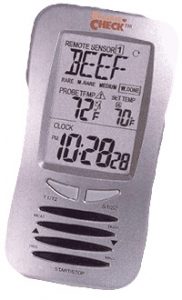Temperature Fluctuations in Fresh Beef Merchandisers
Temperature has a profound effect on bacterial growth, even for psychrotrophic bacteria that can grow at cold temperatures. Bacteria typically found on fresh beef at 5°C (41°F) will grow at twice the rate of bacteria at 1°C (33.8°F), while at 10°C (50°F) bacteria will grow at triple this rate, quickly reducing the shelf life of the beef. In one study, beef stored at 5°C (41°F) spoiled at three times the rate of beef stored at 0°C (32°F), while beef stored at 10°C (50°F) spoiled at five times that rate.
The Canadian Meat Packers Council recommends that internal meat temperatures should not exceed 39°F or 4°C, and several researchers have recommended that meat surface temperatures should be near the freezing point.
However, various studies have found that surface temperatures of displayed meat can vary from 25°F to 68°F (-5 °C to 20°C), with internal temperatures sometimes above 50°F or 10°C, and average steak surface temperatures 8 to 10°C higher than the ideal storage temperature recorded on the display case thermometer, sometimes fluctuating to 20° C higher particularly when the meat was exposed to meat display case lighting.

Displayed ground beef temperatures have been measured at 8°C to 13°C (46°F to 56°F) in one study and ranged from more than 4°C to 25°C (39°F to 77°F) in other surveys.
Shelf life of beef stored in closed refrigerators at 1°C was 5 to 9 days in one study, and another found that rib steaks at 1°C maintained ideal colors for 9 days, but ideal colors lasted only 2.5 days when kept at 10°C.
Lighting sources are one of the major factors in increasing the surface temperature of beef steaks. Light radiation penetrates clear packaging and is absorbed by the meat as heat, forming a greenhouse effect in which the heat becomes trapped beneath the wrapping, often raising meat surface temperatures far beyond recommended storage temperatures and thereby creating an environment ideal for exponential bacterial growth.
Controlling the surface temperature of beef through low-UV lighting sources is important to prevent exponential bacteria growth, discoloration, and spoilage. Processing beef with sanitized cutting methods and maintaining low display temperatures (1°C) have been found to result in longer shelf life and less discoloration.
Other studies have revealed that even frozen beef displayed at -25°C will discolor as the myoglobin continues to oxidize under display case lighting. Temperature tends to be the most significant instigator of myoglobin oxidation in fresh meat, while for frozen meat the oxidation is light-induced.
